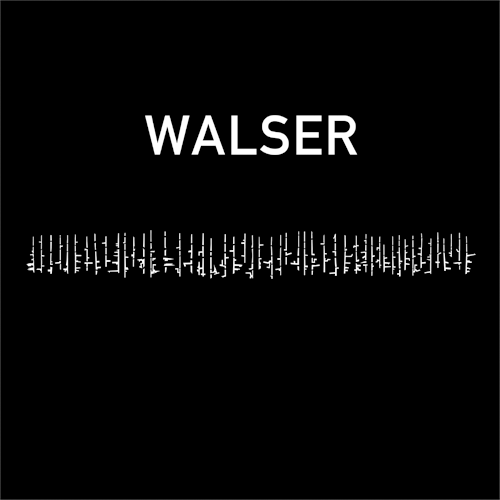|
MG V7 : ROBERT PIOTROWICZ "WALSER"
Side A
Oleh Rami Pohon
(riverside performance for five / hut blow for any number of participants and one muted mmempekík player)
Tingal
(sylvan setup for two)
Elok Pada Masa
(nighttime gathering for two and any numbers of attendees)
Automatu
(for those who rebuild past events in memory)
Side B
Udara Rosak
(for two anxious performers)
Utara
(for one who heard everything / small band including strings, percussion and electronics)
Dimana
(for any number of pianists and one bad doublebass player)
composed, recorded and mixed by Robert Piotrowicz
all instruments: double bass, piano, percussions, electronics and objects performed by Robert Piotrowicz
artwork and design concept by Robert Piotrowicz
layout by Kama Sokolnicka
collage based on Adam Sikora's photography by Kama Sokolnicka
accompanying texts by Grzegorz Jankowicz, Burkhard Stangl and Jon Wozencroft
mastering and cut by Rashad Becker at D&M Berlin
The music originally appeared as a 5.1 soundtrack to "Walser", film directed by Zbigniew Libera
co-released with Bocian Records
The new album by Robert Piotrowicz Walser is a reiteration of the artist's composition for the namesake film by Zbigniew Libera where a fictitious Concheli tribe enacts its ritual gestures through music and performance.
Rather than following a traditional soundtrack format where music is written after the film is cut to illustrate the cinematic form, Piotrowicz treats the film music as a point of departure to create an autonomous sound work altogether. While its aesthetic narrative echoes the one that we are submerged into throughout the film, the record's underlying structure and dramaturgy were reconfigured and reworked into a new spatial and affective arrangement. Unlike Piotrowicz's previous works, Walser is predominantly an acoustic album with a nod to his previous projects that imagined fictional music ensembles (such as Rurokura and Eastern European Folk Music Research Volume 2).
The idiosyncratic sound of instruments is a result of multifaceted composition process, which took as its starting point custom-made instrument design (wind, percussive and string), prototyping the music structure and meaning, and composer-led choreography of actors' gestures that took place during the film shoot and in its predeceasing performance workshop.
In the film Walser Piotrowicz's original music score is thus enacted by body of sound rather than by actors on the filmset as it fills up the metastructure devised by the composer. Of course music always influences the way one views a film, but in Walser it becomes a cinematic language of its own kind, an extension of the camera apparatus, an omnipresent observer and narrator that sculpts our experience of watching and listening.
In the album Walser sound returns to its first and foremost dimension, time, and while the storyline is no longer in the foreplan, its immaterial traces persist in the LP structure and narrative, incorporating a myriad of mood changes and dramatic turns. The album is an analogue recuperation of the primal, original sound where music finds a new form of embodiment and occupies a new territory beyond the screen and beyond the image. It is a sensuous body of sound that carriers meaning beyond traditional ways of verbal and pictorial communication.
|
